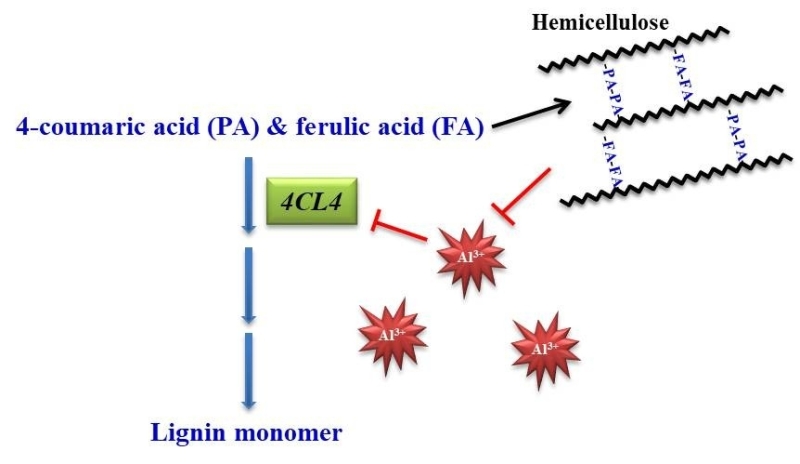A new mechanism connecting hydroxycinnamic acid-mediated modification of cell wall to aluminum resistance in rice discovered
Scientists at the Shanghai Center for Plant Stress Biology (PSC), Center for Excellence in Molecular Plant Sciences of the Chinese Academy of Sciences, have discovered that hydroxycinammic acids including 4-coumaric acid (PA) and ferulic acid (FA) are positively involved in aluminum (Al) resistance in rice through the modification of the cell wall and thereby the reduced Al binding to the cell wall.
Al toxicity is a major limiting factor on acids soils, which comprise over 30% arable land in the world. The root cell wall is the first and primary target of aluminium (Al) toxicity. Monocots such as rice can accumulate appreciated levels of hydroxycinammic acids (HCAs) including PA and FA to modify and cross-link hemicellulose and/or lignin of the cell wall. Nevertheless, it is unclear whether this HCAs-mediated modification of the cell wall is important for Al accumulation and resistance.
Shuo Liu and colleagues in Chao-Feng Huang’s lab have now demonstrated that Al stress is able to trigger PA and FA accumulation through the repression of the expression of RAL1/4CL4 encoding the 4-Coumarate:Coenzyme A ligase and its homologous genes, which in turn modifies the hemicellulose to reduce Al binding to the cell wall (Figure 7) and ultimately increases Al resistance. Their results therefore reveal that rice plants can actively utilize PA and FA-mediated modification of the cell wall to defend Al toxicity.
Funding: This study has been funded by the National Natural Science Foundation of China, the Shanghai Center for Plant Stress Biology, Chinese Academy of Sciences and the National Key Laboratory of Plant Molecular Genetics.
Link to this article: https://onlinelibrary.wiley.com/doi/10.1111/tpj.14995

Figure: Al stress inhibits the expression of 4CL4 and other 4CLs encoding the 4-Coumarate:Coenzyme A ligase that are involved in the lignin biosynthesis pathway, which triggers the accumulation of 4-coumaric acid (PA) and ferulic acid (FA). The increased accumulation of PA and FA in turn promotes the crosslinking of the hemicellulose with other cell wall components and thereby reduces Al binding to the cell wall and ultimately helps defend Al toxicity.